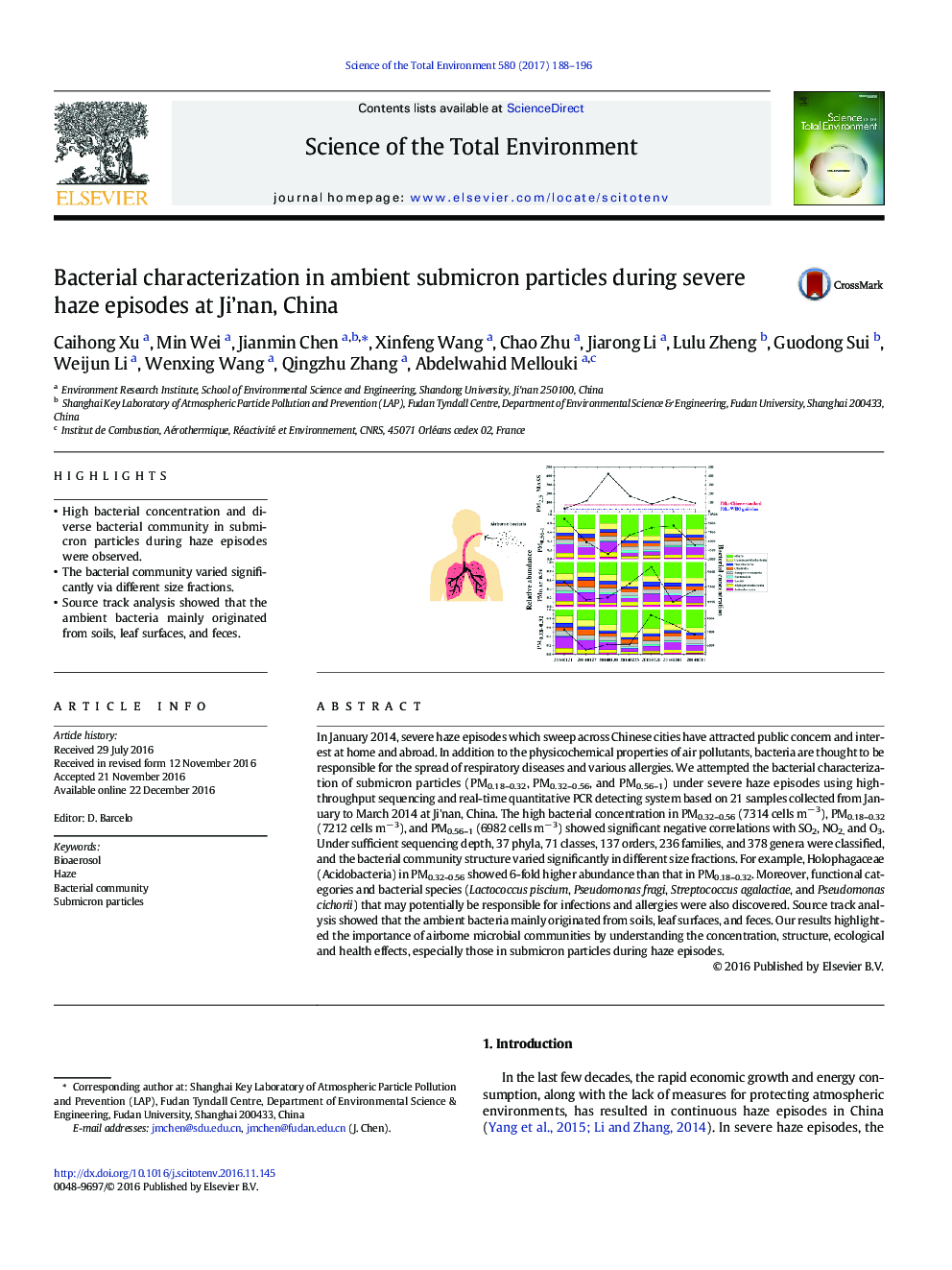| کد مقاله | کد نشریه | سال انتشار | مقاله انگلیسی | نسخه تمام متن |
|---|---|---|---|---|
| 5752063 | 1619711 | 2017 | 9 صفحه PDF | دانلود رایگان |
- High bacterial concentration and diverse bacterial community in submicron particles during haze episodes were observed.
- The bacterial community varied significantly via different size fractions.
- Source track analysis showed that the ambient bacteria mainly originated from soils, leaf surfaces, and feces.
In January 2014, severe haze episodes which sweep across Chinese cities have attracted public concern and interest at home and abroad. In addition to the physicochemical properties of air pollutants, bacteria are thought to be responsible for the spread of respiratory diseases and various allergies. We attempted the bacterial characterization of submicron particles (PM0.18-0.32, PM0.32-0.56, and PM0.56-1) under severe haze episodes using high-throughput sequencing and real-time quantitative PCR detecting system based on 21 samples collected from January to March 2014 at Ji'nan, China. The high bacterial concentration in PM0.32-0.56 (7314 cells mâ 3), PM0.18-0.32 (7212 cells mâ 3), and PM0.56-1 (6982 cells mâ 3) showed significant negative correlations with SO2, NO2, and O3. Under sufficient sequencing depth, 37 phyla, 71 classes, 137 orders, 236 families, and 378 genera were classified, and the bacterial community structure varied significantly in different size fractions. For example, Holophagaceae (Acidobacteria) in PM0.32-0.56 showed 6-fold higher abundance than that in PM0.18-0.32. Moreover, functional categories and bacterial species (Lactococcus piscium, Pseudomonas fragi, Streptococcus agalactiae, and Pseudomonas cichorii) that may potentially be responsible for infections and allergies were also discovered. Source track analysis showed that the ambient bacteria mainly originated from soils, leaf surfaces, and feces. Our results highlighted the importance of airborne microbial communities by understanding the concentration, structure, ecological and health effects, especially those in submicron particles during haze episodes.
Graphic abstract249
Journal: Science of The Total Environment - Volume 580, 15 February 2017, Pages 188-196
